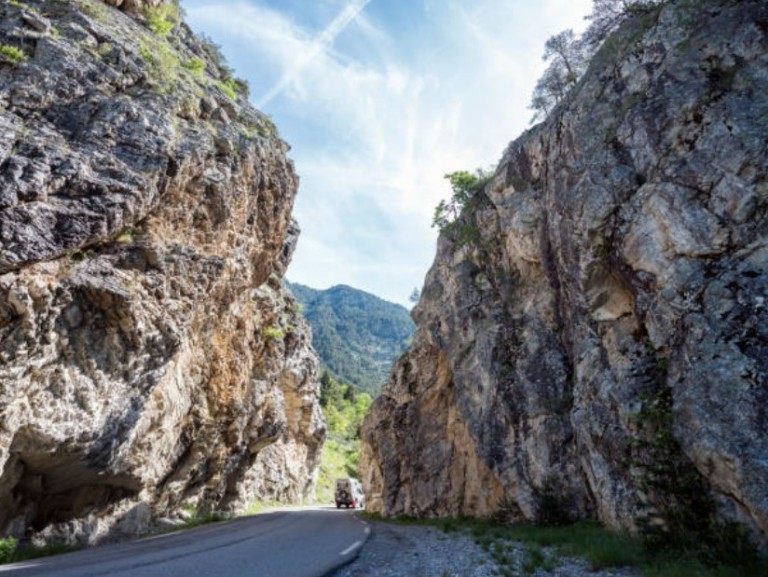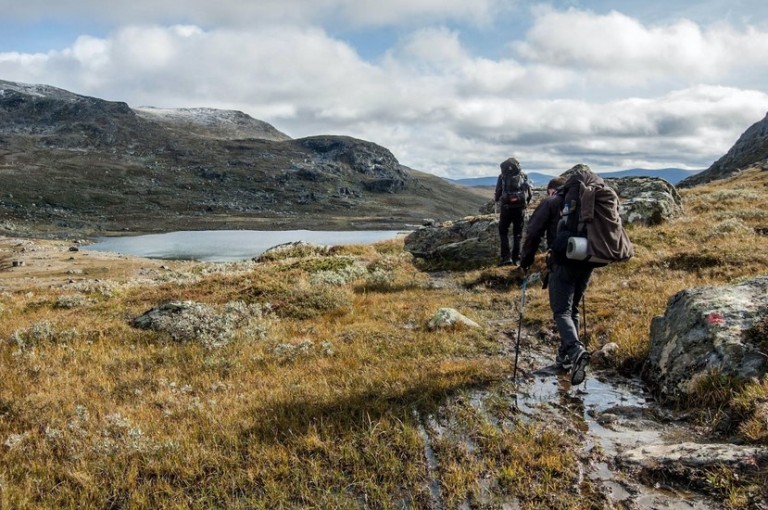Page Contents
For years, you’ve been daydreaming about the Walker’s Haute Route. You’re battling over the specifics. You want to plan an experience you’ll remember for years.
The most prestigious mountain walk in the Alps is the Haute Route. It is a network of routes that links Mont Blanc with the famous Matterhorn and was first mapped and traversed in 1861 by the British Alpine Club. No living hiker doesn’t yearn to travel this storied mountain trek for a valid reason. It’s both lovely and challenging.
We’ve gathered some advice from our years of alpine expertise to help you make the most of your journey along the alpine Haute Route. This is a once-in-a-lifetime experience.

A Summary of the Walkers Haute Route
This is a summary of the features of the Walker’s Haute Route walking trail:
-
A distance of 200 kilometers (ca. 124 miles)
-
Fifteen thousand two hundred meters are inclined on average
-
The trip’s highest point is 2,987 meters
-
It has a 12,000-meter rise
-
Ten thousand meters worth of descents is included
-
The elevation is 3,000 meters in height
-
A typical day of trekking lasts 6 to 8 hours and covers 10-15 kilometers
How Many Days Does It Take to Finish the Walkers Haute Route Hike?
The majority of hikers normally need between 10 and 14 days to complete the AlpenWild Haute route. Everything will depend on how quickly you want to go and whether you will stop for rest days or breaks along the road.
Before making arrangements, think about how many miles and hours you can safely log each day. Keep in mind that steep inclines may cause you to go more slowly.
If you’re tight on time, taking the cable car or getting on a train allows you to skip some routes.
How Many Kilometers is the Haute Route?
From Chamonix, France, to Zermatt, Switzerland, the hiker’s trail of the Walkers Haute Route crosses the French and Swiss Alps. It is around 200 kilometers (ca. 124 miles) away.
What Time of Year Is the Best to Start This Hiking Trip?
Due to the ideal weather for hiking, the peak hiking season normally lasts from mid-June through mid-September. The route is too dangerous to go on since it is mostly buried in snow during the winter. Therefore, you should ensure your trip is planned ahead.

Walker’s Haute Route Travel without a Guide
The track is clearly marked in case you decided on hiking the trail without a guide. Give heed to all red and white striped markings to remain on the trail!
On your Haute Route self-guided trip, you ought to have maps of the trail, this is especially important if you’re traveling alone. A compass and safety equipment are also important. But, it’s better to always hike with a group of people, and heed route warnings about potentially falling rocks and narrow footpaths.
Food and Housing for The Walkers Haute Route trip
Walkers Haute Route accommodation facilities are placed at strategic crossroads. The majority of these lodging alternatives offer food to their visitors.
Here is an overview of the many housing options available to both single hikers and those going on the walk with family or other groups:
-
Camping: The most economical option for hikers on a restricted budget is camping. You may set up a tent outside and take in your surroundings.
-
Mountain huts: These quaint, traditional cottages are a great place to meet other hikers and immerse yourself in the trail’s culture.
-
B&Bs – These facilities are a step up in comfort level from mountain huts, which may be found throughout the trail.
-
Hotels: For those seeking a little extra comfort, there are several hotels available in every price category.
The prettiest sites frequently fill up during the busy hiking season, so we advise reserving your hotel in advance before barking in on your Walkers Haute Route hike.
How Much Would a Walker’s Haute Route Hike Cost?
When preparing a budget for trekking in the Alps, you need to consider where you lodge, the food, and whether you go with a tour group or not.
A tour with a guide is often pricey, but it includes meals and accommodation. If you hike alone, costs become cheaper. However, traveling alone is less expensive but also less enjoyable than traveling with family. Even if it costs more, having friends and family with you on the walk makes it more delightful.
Tip: Book your travels for the middle of the week to considerably save on prices. You can almost cut the cost of trips down to the Alps during the week in a half!
The Walkers Haute Route Hike Preparations
People frequently wonder, as is the case with every hiking excursion, “how tough is the Haute route?” We will not be lying to you: trekking the Alps is quite a challenging venture. But it doesn’t mean you have to be a great hiker to complete it. Anyone familiar with hiking and a set training regimen will do well on this hike.
You’ll be trekking for 6-8 hours every day, including severe inclines, for two weeks. Start your training early with long runs, hikes, gym sessions, and climbs. You need to build your stamina before starting this journey.

The Walkers Haute Route vs The Tour Du Mont Blanc
The argument of the Walker’s Haute Route versus the tour du Mont Blanc is a popular one among hikers, but the truth is that they are more comparable than dissimilar. But even so, the two pathways are significantly different. Both excursions offer arduous elevation changes spanning more than 100 miles (ca. 161 km) over high Alpine terrain. Ibex, chamois, and marmots will accompany hikers as they traverse undulating meadows and ascend high mountain passes. Views include mountains, glaciers, and mineral-rich streams.
Haute route walking along the Walker’s Haute Route trail often features steeper rises and downhills than the tour du Mont Blanc, putting hikers at greater risk of slipping off the track and being struck by boulders from above.
Tips for Hiking the Walkers Haute Route
-
Start planning on time
-
Ensure you pack light
-
Learn some indigenous words
-
Prepare for different weather conditions
-
Take some primary medications with you
Essentials to pack for the journey
The following are important materials to pack for hiking the Walkers Haute Route:
1. Clothes
-
dependable hiking boots with a daypack
-
layered clothing and a raincoat
-
hiking socks and additional undergarments
-
PJs and informal evening wear
-
A swimsuit
2. Additional materials
-
A water bottle
-
Sunglasses and sunscreen lotion
-
Trekking poles (optional)
-
A Headlamp
-
Toiletries, a first aid kit, and a portable towel
-
Slumbering bags
-
A smart device with a camera
-
A diary/ journal
-
A Walkers Haute Route map and other navigational aids, such as a compass
Daily Timeline for the Walkers Haute Route Trip
Read our Walker’s Haute Route itinerary and understand the timeline for each day of the journey.
-
First Day – Arrival in Chamonix
-
Second Day – Hike from Argentière to Trient
-
Third-Day – Journeying from Trient down to Champex
-
Fourth Day – Trekking from Champex to Le Châble
-
Fifth Day – Getting to Cabane du Mont Fort from Le Châble
-
Sixth Day – A hike from Cabane du Mont Fort to Cabane Prafleuri
-
Seventh Day – Cover the grounds from Cabane Prafleuri to Arolla
-
Eighth Day – Walking from Arolla to La Sage
-
Ninth Day – Journey from La Sage to Cabane de Moiry
-
Tenth Day – Hike to Zinal from Cabane de Moiry
-
Eleventh Day – Going from Zinal to Gruben
-
Twelfth Day – Walk from Gruben to Europahutte
-
Thirteenth and Final Day – Trek from Europahutte to Zermatt